
By Aaron Tay, Lead, Data Services
Elicit is one of the first academic search tools that leverages the capabilities of modern large languages to support academic search in a significant and new way. In fact, early versions of Elicit leveraged OpenAI’s GPT-3 before ChatGPT became a household name.
SMU Libraries have been receiving some queries about the possibility of subscribing to Elicit for some time now. As such, on 29 Feb 2024, we invited Jungwon Byun, Cofounder and Coo of Elicit to share about the capabilities of Elicit as part of our Series on AI Powered research tools (see our coverage of our earlier webinar covering SciSpace).
This webinar drew 68 people and the recording and slides are available.

In an engaging 60-minute session, this webinar covered the basic idea behind Elicit and even included a sneak preview of the upcoming new features in Elicit. At the end of the webinar, participants were given an opportunity to submit their emails to be invited into a one-month trial of the Elicit premium account.
If you're interested in learning more, keep reading to discover some of the key takeaways from the webinar.
About Elicit
Back in 2019, long before the earliest GPT models, Jungwon was coming to the belief that AI was one of “the most transformative technologies of our lifetime” with great optimising power and that if this “hyper-optimising power” was directed at the wrong goals, things would be disastrous for society.
As such, Jungwon and her cofounder started a research lab called “Ought” to explore how the optimisation and cognitive power of AI could be used to help people determine what they "ought" to do.
Around the time of the release of GPT-3, it became possible for AI technology to assist researchers and Elicit was created to train on and imitate the researcher’s best truth-seeking processes.
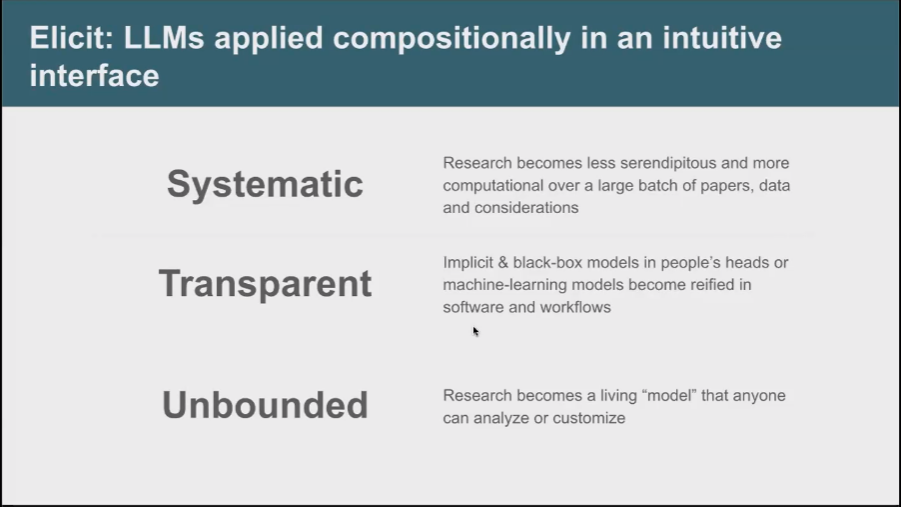
Elicit can be described as “LLMs applied compositionally in an intuitive interface” and is based on three core values:
- Systematic
- Transparency
- Unbounded
Like many similar modern AI search tools of its class, by combining search and LLMs, it provides context for its outputs and makes it easy to check accuracy and prevents hallucination.
As a side note, preventing hallucination here refers to the fact that while the papers cited will certainly be real, they may still “misinterpret” a real paper by misstating the findings among other errors.
Elicit prioritises “making it clear where the model might be mistaken, unconfident” making it easier for a user to check for errors.
Currently, Elicit is being used by 200,000 monthly users who found it through word of mouth.
Functions of Elicit
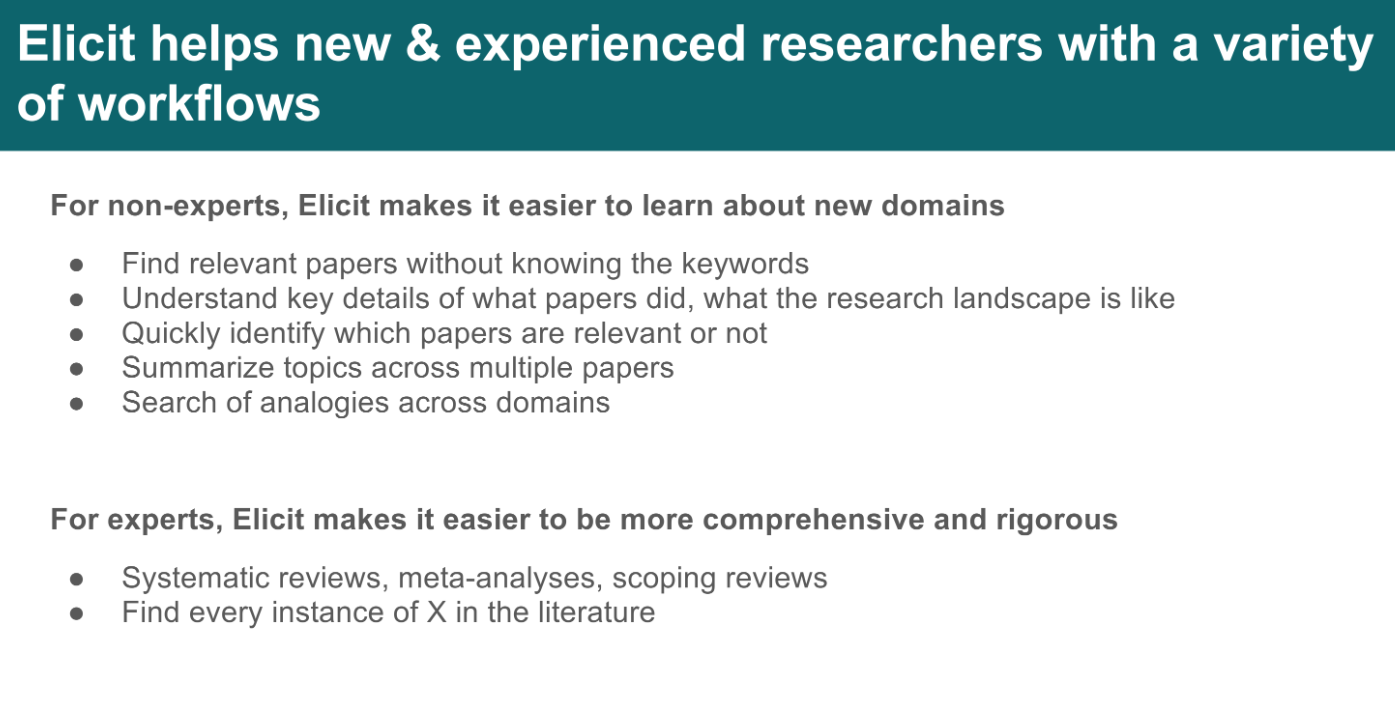
Elicit has been architecturally designed around strong building blocks of research and reasoning. Currently, there are three workflows that correspond to this design. These workflows are:
- Find Papers: This workflow allows you to semantically search papers to find relevant results. You can quickly extract key details about the paper using this workflow.
- Extract Data: This workflow extracts key details from uploaded PDFs. It even allows you to pull the data from Zotero.
- List Concepts: This workflow summarises the topics discussed in the literature, giving you a quick overview of the concepts covered.
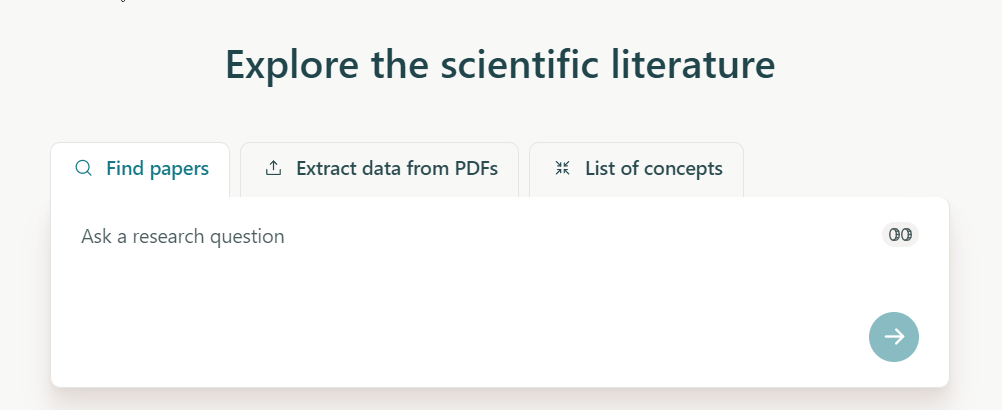
During the webinar, Jungwon focused largely on the “Find papers” workflow, which is very similar to other emerging tools like SciSpace.
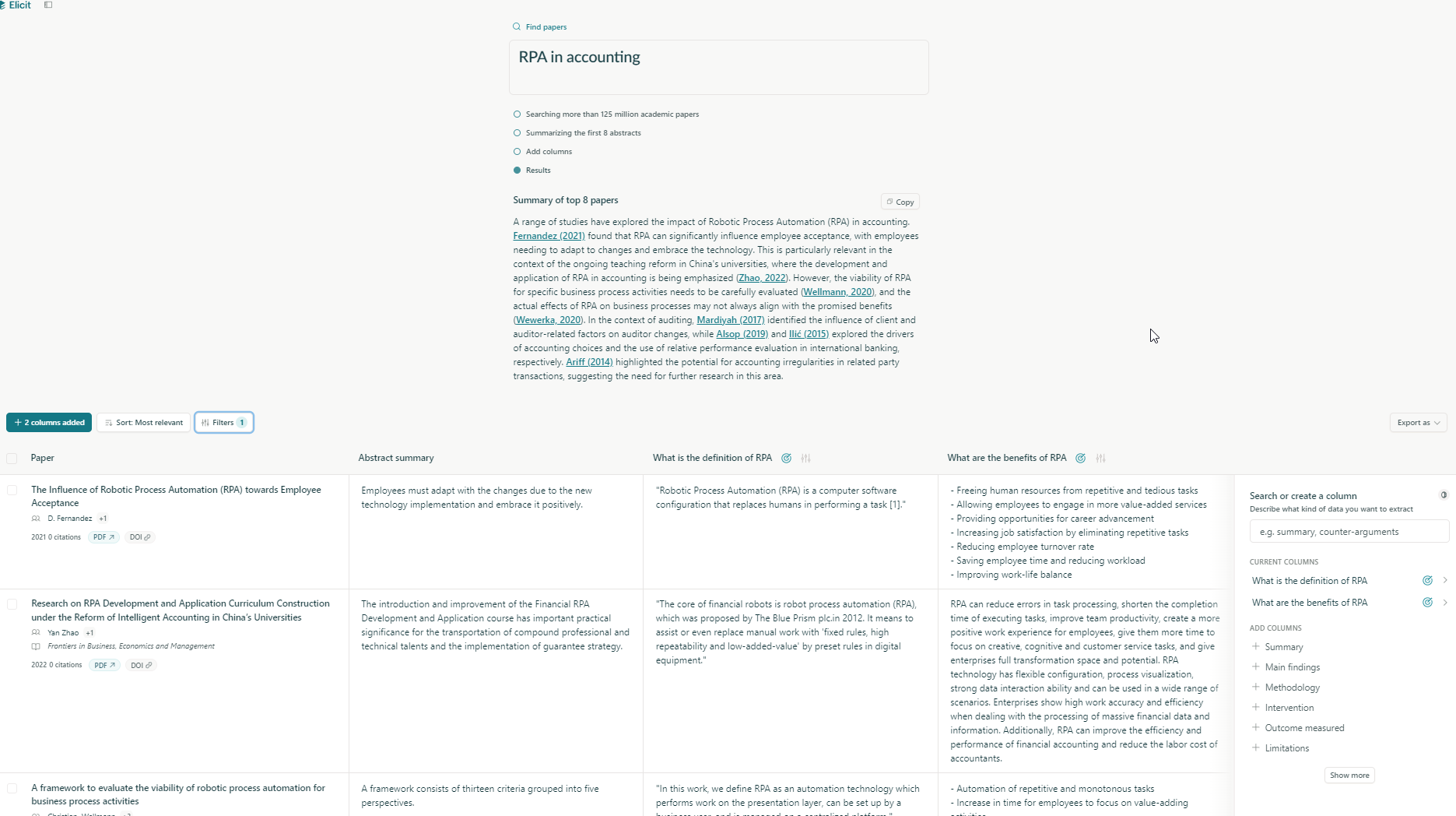
The search itself uses Semantic Search as opposed to traditional lexical search. The main concern here is twofold. Firstly, because it uses Semantic Search, not all results will have the exact keyword used in the query. The solution is to use the filter “abstract contains” if needed.
Elicit also uses Semantic Scholar as a source. This is a very broad source so it may not cite the top journals you want. According to Jungwon, the ability to filter by journals is on the roadmap.
We were also told that the direct answer provided under the "summary of top 8 papers" (the free version uses the top four papers while the plus version uses the top eight) only extracts from the abstracts of the top 8 papers, although the full text used (if available) will be available in the table columns below.
However, the table column, which allows you to compare papers across various characteristics, is most useful in my view. In addition to using the predefined columns, you can customise your own by not only naming the custom column but also setting a description and giving instructions, just as you would to ChatGPT on what to extract.
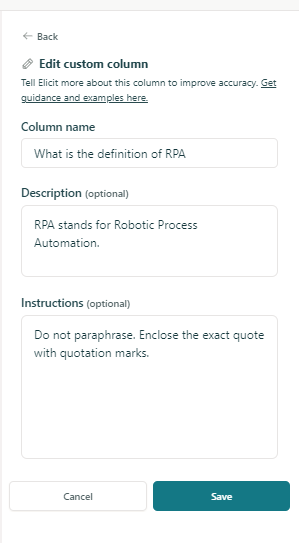
Of course, such extractions are never 100% accurate, and Elicit helps you check by flagging extractions as “low accuracy” and you can always mouse out extractions to see what the text was used to generate the answer.
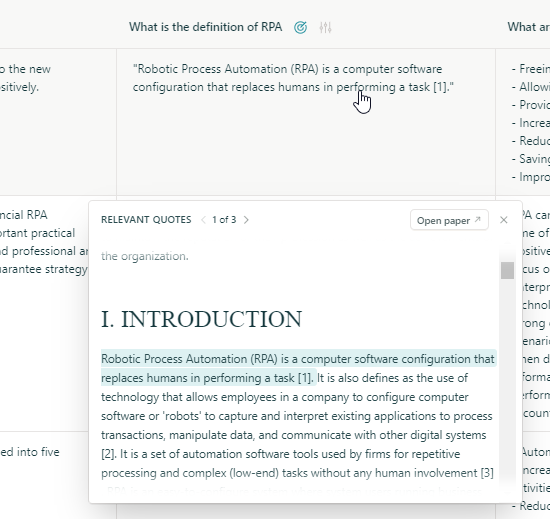
Talking about accuracy, Elicit has also released an infographic that demonstrates the time saved and accuracy achieved with Elicit.
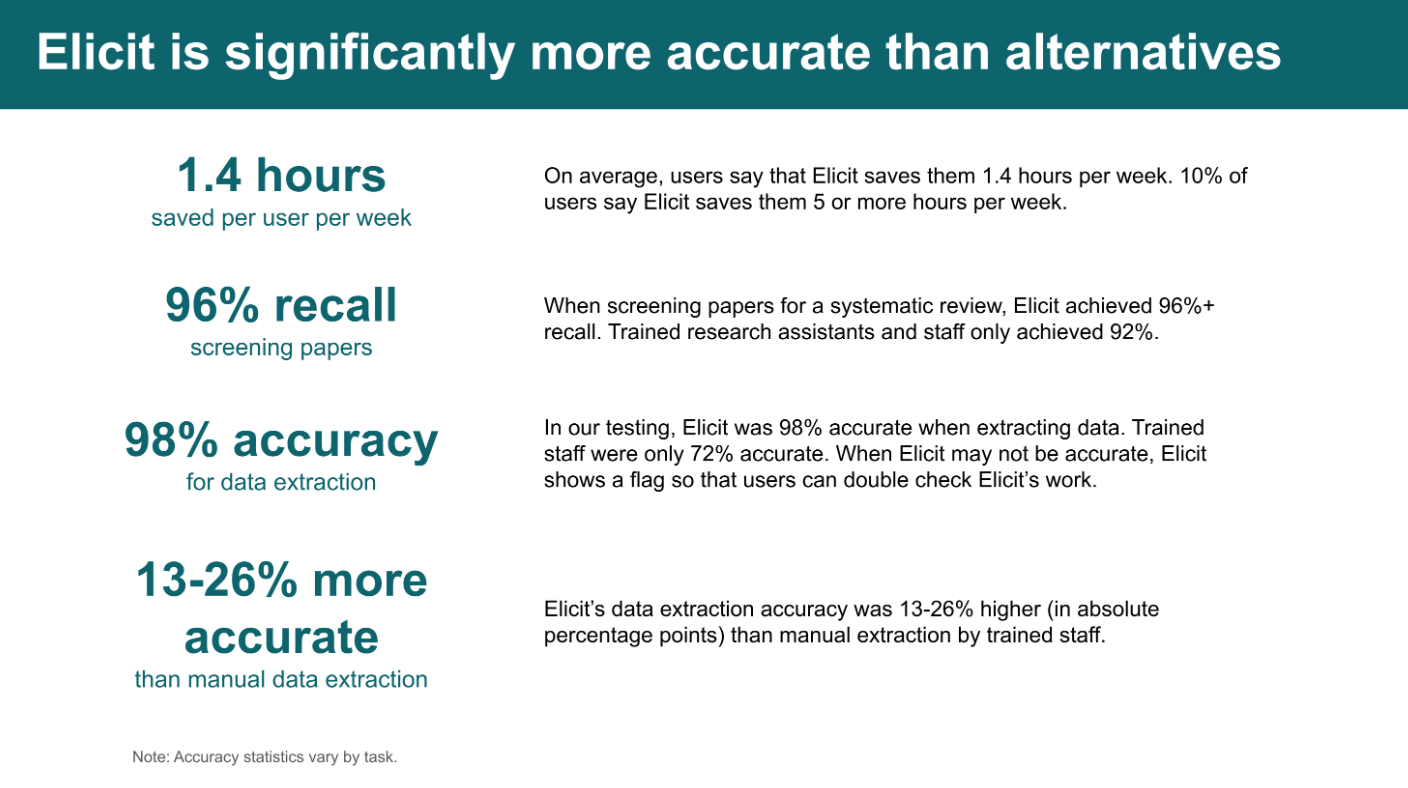
There is very little detail on how these results were obtained, but on paper, they look impressive.
Sneak peak of the future
Towards the end of the webinar, Jungwon also gave the participants a sneak peek of new upcoming workflows.
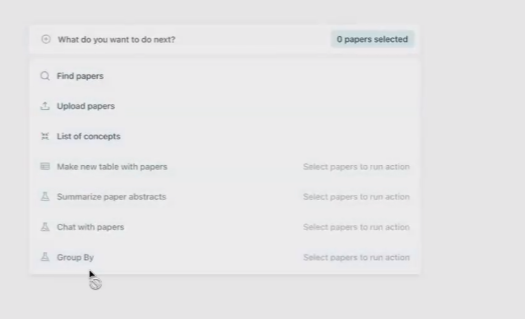
These new workflows included:
- Make new table with papers
- Summarize paper abstracts
- Chat with papers
- Group by
Particularly fascinating is the new notebook feature. Jungwon demonstrated how this feature can be used to perform multiple iterative searches, for example, “What are the positive effects of screen time on child”, “What are the negative effects of screen time on child”, select papers from multiple queries and use the “make new table with papers” to combine them into one table.
After that, you can use the "summarize paper abstracts" workflow to help with screening. You can also chat with papers, or group column labels like methodology (see below).
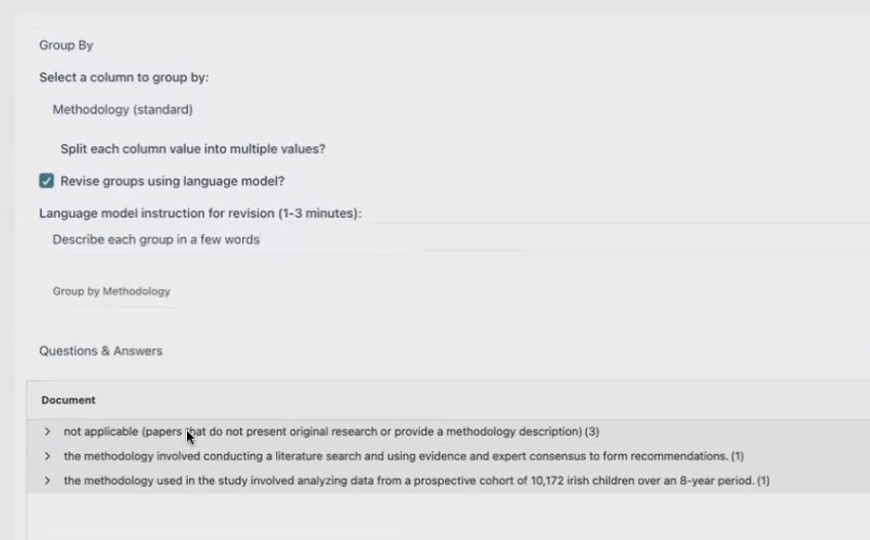
You can see how these new workflows add to the three existing “strong building blocks of research and reasoning” and how the new workbook allows you to combine these different workflows.
We are also given a Roadmap for 2024 and beyond.
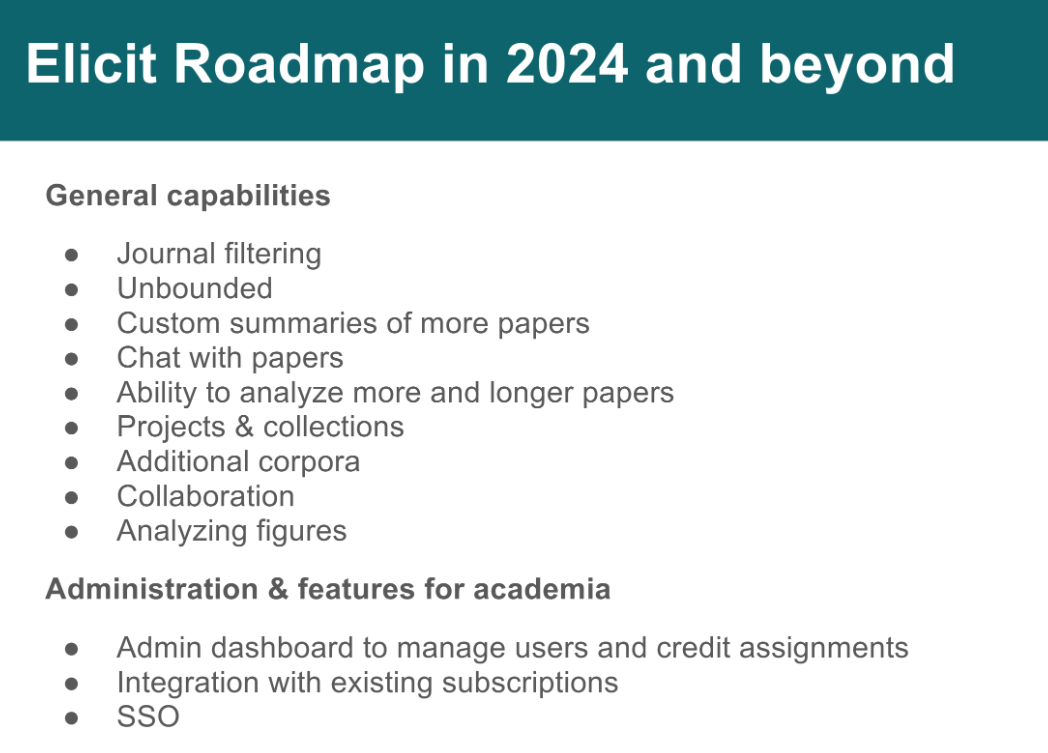
To sum up, this is Elicit's perception of themselves in comparison to their rivals: “Elicit prioritises accuracy and batch workflows custom-designed for researchers.”
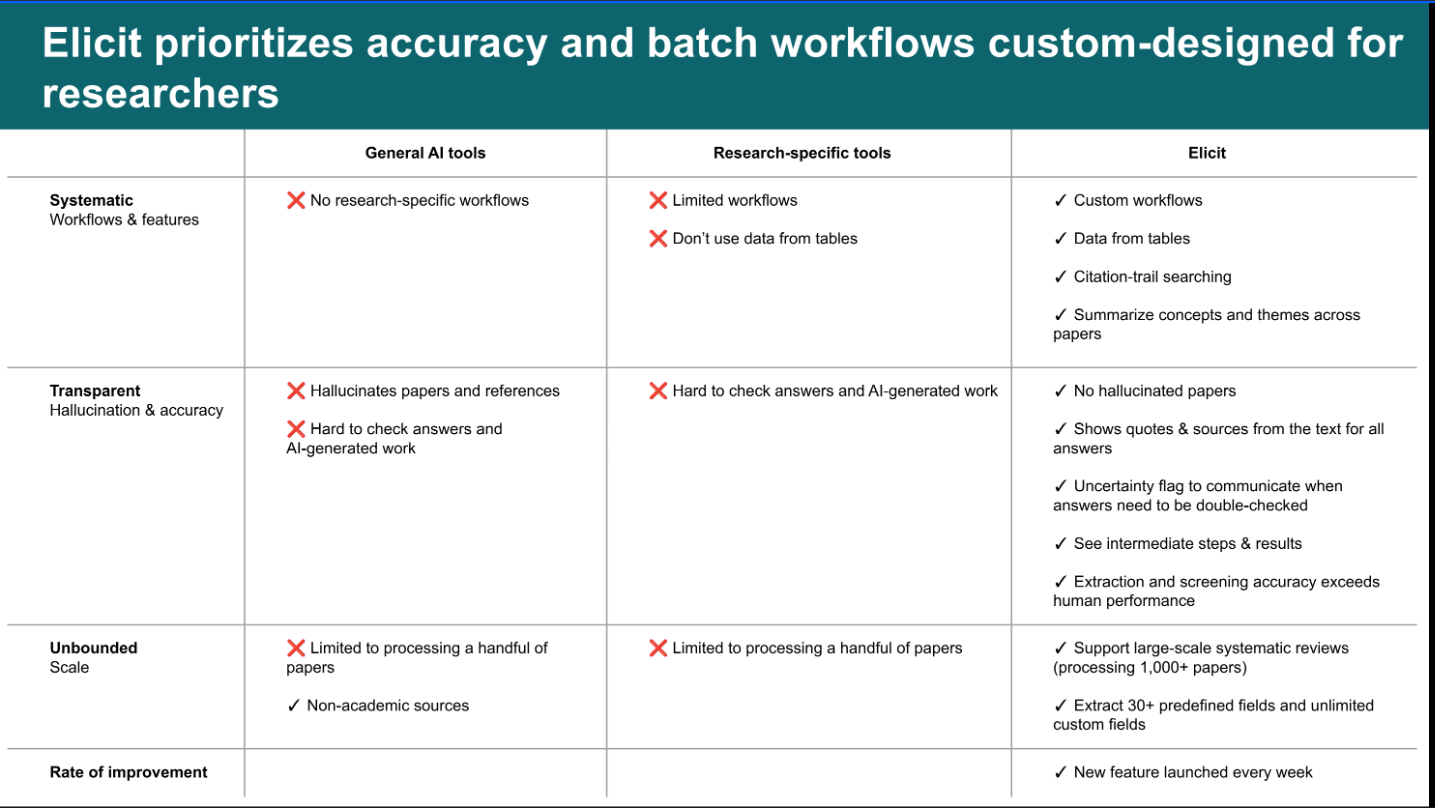
Conclusion
Elicit is, as expected, a very interesting and promising tool for researchers. Similar to SciSpace, we are trialing the tool for a month with users from the SMU Community and we will share the outcome of the trial later.